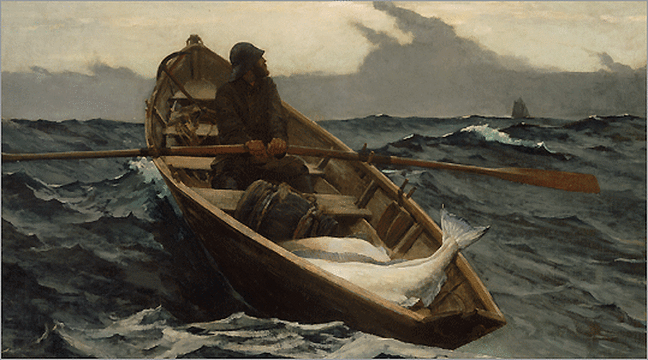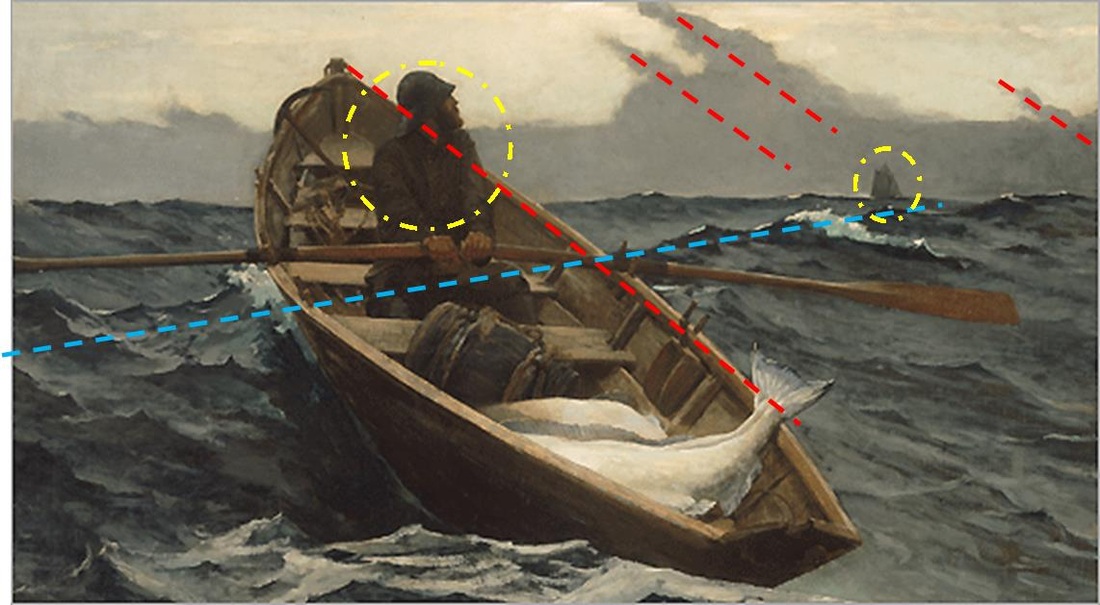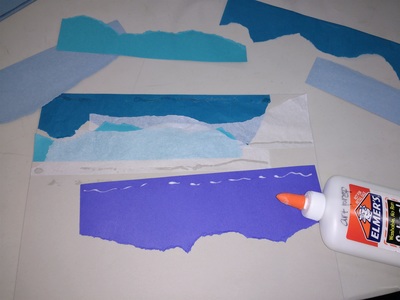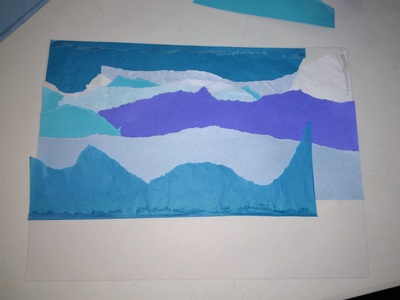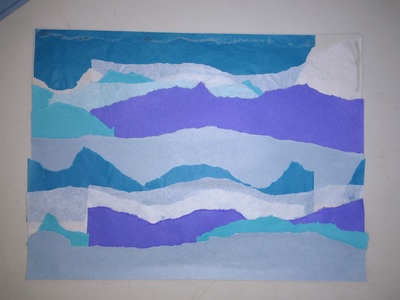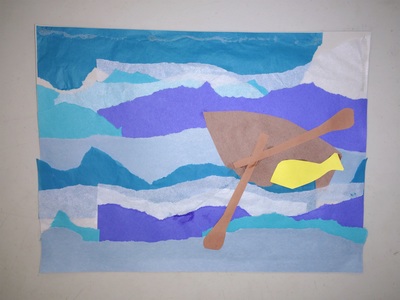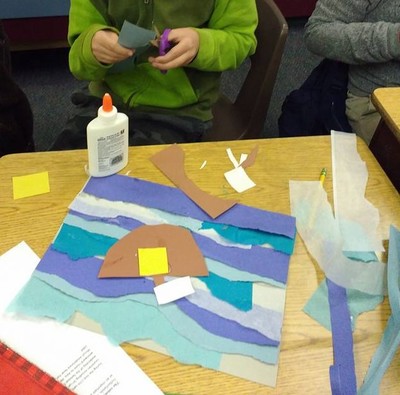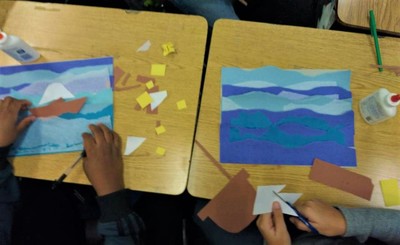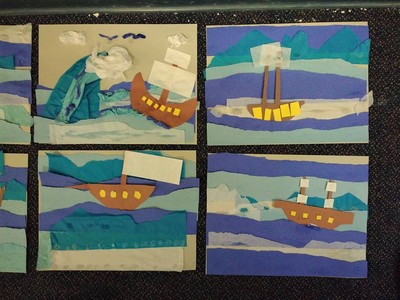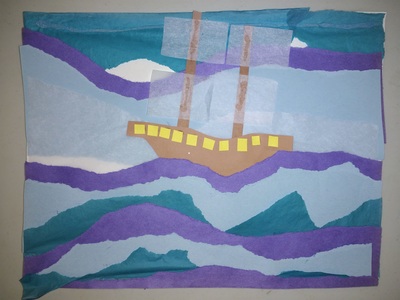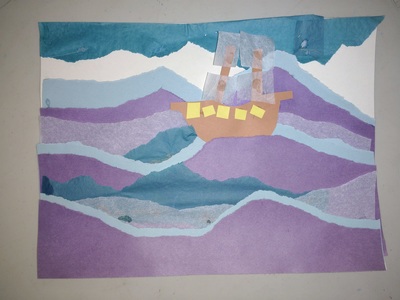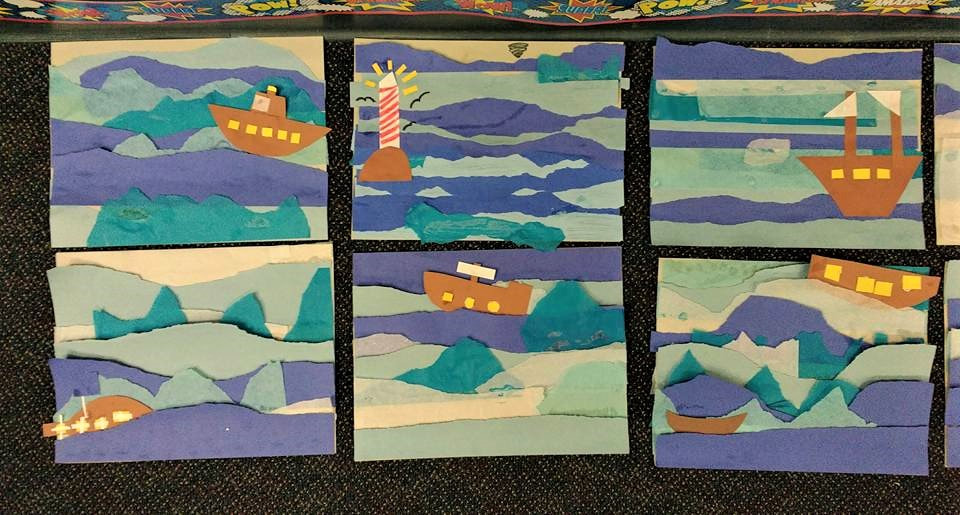Fifth Grade
Winslow Homer Seascapes
Winslow Homer (1835 - 1910) was an American artist who believed that art should be based on the direct observation of nature. He lived at a time when abstract art was very popular, but he didn't care about the modern theories of painting or current trends in art. He never paid attention to other artists, not even the famous ones in Europe. He wanted his art to be "real," based on what he saw, or as he said: "When I have selected the thing carefully, I paint it exactly as it appears." His early art showed pleasant scenes of life in rural areas of the country, and during the Civil War, he was hired to illustrate scenes of soldiers (usually in their camp life rather than the battles).
Homer had always loved the ocean, so, in the 1880s, he moved to the coast of Maine where he could paint water scenes. He not only painted the sea itself, but also scenes depicting "man against the elements" that showed how powerful the water could be, especially during a storm. Later, Homer stopped painting human figures and just focused on the sea, often portraying harsh, stormy weather. When you look at his paintings, it seems like you can almost feel the spray of the churning waves, which is one of the reasons why Homer is known as the foremost American marine painter of all time.
Homer had always loved the ocean, so, in the 1880s, he moved to the coast of Maine where he could paint water scenes. He not only painted the sea itself, but also scenes depicting "man against the elements" that showed how powerful the water could be, especially during a storm. Later, Homer stopped painting human figures and just focused on the sea, often portraying harsh, stormy weather. When you look at his paintings, it seems like you can almost feel the spray of the churning waves, which is one of the reasons why Homer is known as the foremost American marine painter of all time.
Winslow Homer is also one of the first artists to use watercolor paints for finished works of art. In the past, watercolors had been used in preparatory studies, but Homer's master handling of the medium elevated watercolors to a new height. His marine watercolors are brightly colored and luminous, filled with gorgeous depth of color, from the deep blues of the water to the white patches of plain paper shining through.
"The Fog Warning" was not a watercolor, but it still shows Homer's fascination with the sea, and it definitely shows man against the elements. The painting shows a single fisherman rowing a dory with two or more large halibut weighing down the stern. Notice how the waves have picked up dangerously and the small boat looks almost vertical to us as viewers--we can see right into the boat. The man turns to look back, both at the large sailing vessel in the distance and the incoming cloud of fog that may prevent him from reaching that vessel if he is not quick enough. Notice how Homer balances his painting by having the boat angle off to the left in a strong diagonal, while the wave line is going in the opposite diagonal (see diagram below). The dark patch of fog also seems to grow ominously at a point above the distant ship, with lines mimicking the position of the main dory. Even though the lines and shape create balance, the strong diagonals also provide the tension that reinforces the predicament of the lone fisherman.
Paying attention to the lines, shapes, colors, direction and balance of the picture, helps us understand how the artist uses these elements to help tell the story of his artwork.
Paying attention to the lines, shapes, colors, direction and balance of the picture, helps us understand how the artist uses these elements to help tell the story of his artwork.
You may also want to check out a video by the Khan Academy that discusses "The Fog Warning" at http://smarthistory.khanacademy.org/homer-the-fog-warning.html.
the project
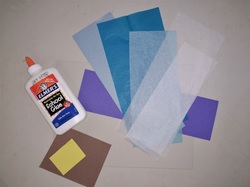
Prep - 45 min. (includes making sample)
Print - Winslow Homer, Fog Warning
Materials
-9 x 12 grey construction paper for each student
-3 or 4 strips of paper per student of each of the following:
-white tissue paper
-blue tissue paper
-bright blue construction paper
-light blue construction paper
Strips of paper should be 3-4 inches wide, and various lengths (some the length of the main paper, i.e. 12 inches long; some can be shorter):
-small piece of brown construction paper for boat (1 per student)
-small piece of yellow construction paper for boat windows (1 per student)
-glue bottles
-a few scissors for students to cut boats only (NO cutting the waves)
Print - Winslow Homer, Fog Warning
Materials
-9 x 12 grey construction paper for each student
-3 or 4 strips of paper per student of each of the following:
-white tissue paper
-blue tissue paper
-bright blue construction paper
-light blue construction paper
Strips of paper should be 3-4 inches wide, and various lengths (some the length of the main paper, i.e. 12 inches long; some can be shorter):
-small piece of brown construction paper for boat (1 per student)
-small piece of yellow construction paper for boat windows (1 per student)
-glue bottles
-a few scissors for students to cut boats only (NO cutting the waves)
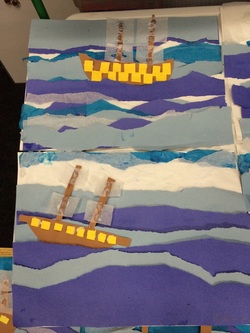
Lesson
1. Show students print and ask them what they see. Talk with students about print, history of artist, and style information. You may also choose to talk about the organization of the picture, as in the diagram above, or you can just focus more on the waves.
2. Talk about layers you see in the ocean and different colors used to create layers.
3. Show students your sample and explain how they will make their own:
-first you tore your paper pieces so that you could layer them, starting at the top, to create an ocean
-you only glue the bottom edge of the paper layers so that the ocean is not flat and you will be able to put your boat in the ocean later
-explain how you alternated colors to make your ocean look alive.
(model layering of pieces of construction paper and tissue paper and glue down starting at top so they can see what you are doing)
-explain to students that when their ocean is complete, they will get brown and yellow paper to make a boat (students will draw or cut out their own boat). Note: 5th graders study US colonies, so the boats could look like The Mayflower, rather than the boat in the Winslow Homer picture.
-they will use leftover white tissue paper to make the sails
-cut out squares for windows of boat, if desired
Art Project
-pass out grey paper and have them put their name on the back
-have parents or students pass strips of paper and tissue paper to students
-students create ocean through tearing their paper and placing on paper before they glue
-have students raise hands to show you their ocean
-when students oceans are complete, you can give them a glue bottle (students can share glue bottles)
-have students raise their hand when they are done with their ocean and pass them their brown and yellow paper to create their boat
-when students have created and glued on their boat, have them raise their hand to make sure they have completed the project
-when students are done, have them return scraps of paper and glue bottles
-please have parent helpers put supplies away in the art room
1. Show students print and ask them what they see. Talk with students about print, history of artist, and style information. You may also choose to talk about the organization of the picture, as in the diagram above, or you can just focus more on the waves.
2. Talk about layers you see in the ocean and different colors used to create layers.
3. Show students your sample and explain how they will make their own:
-first you tore your paper pieces so that you could layer them, starting at the top, to create an ocean
-you only glue the bottom edge of the paper layers so that the ocean is not flat and you will be able to put your boat in the ocean later
-explain how you alternated colors to make your ocean look alive.
(model layering of pieces of construction paper and tissue paper and glue down starting at top so they can see what you are doing)
-explain to students that when their ocean is complete, they will get brown and yellow paper to make a boat (students will draw or cut out their own boat). Note: 5th graders study US colonies, so the boats could look like The Mayflower, rather than the boat in the Winslow Homer picture.
-they will use leftover white tissue paper to make the sails
-cut out squares for windows of boat, if desired
Art Project
-pass out grey paper and have them put their name on the back
-have parents or students pass strips of paper and tissue paper to students
-students create ocean through tearing their paper and placing on paper before they glue
-have students raise hands to show you their ocean
-when students oceans are complete, you can give them a glue bottle (students can share glue bottles)
-have students raise their hand when they are done with their ocean and pass them their brown and yellow paper to create their boat
-when students have created and glued on their boat, have them raise their hand to make sure they have completed the project
-when students are done, have them return scraps of paper and glue bottles
-please have parent helpers put supplies away in the art room
Citations:
- Winslow Homer, The Life Line 1884. www.wikiart.org, https://www.wikiart.org/en/winslow-homer/the-life-line
- Winslow Homer, Eight Bells 1886. www.wikiart.org, https://www.wikiart.org/en/winslow-homer/eight-bells
- Winslow Homer, Breezing Up (A Fair Wind) 1884. www.wikiart.org, https://www.wikiart.org/en/winslow-homer/breezing-up-a-fair-wind-1876
- Winslow Homer, Shark Fishing 1885. www.wikiart.org, https://www.wikiart.org/en/winslow-homer/shark-fishing-1885
- Winslow Homer, Incoming Tide, Scarboro Maine 1883. www.wikiart.org, https://www.wikiart.org/en/winslow-homer/incoming-tide-scarboro-maine
- Winslow Homer, Nebelwarnug (The Fog Warning) 1885. www.wikiart.org, https://www.wikiart.org/en/winslow-homer/nebelwarnung-the-fog-warning
- Winslow Homer, The Gulf Stream 1906. www.wikiart.org, https://www.wikiart.org/en/winslow-homer/the-gulf-stream
- Winslow Homer, The Herring Net. www.wikiart.org, https://www.wikiart.org/en/winslow-homer/the-herring-net
- Napoleon Sarony, Winslow Homer 1880. www.wikiart.org, https://www.wikiart.org/en/winslow-homer
